B O L L I N G E N S E R I E S X X THE COLLECTED WORKSOF C. G. JUNG VOLUME 13EDITORSSIR HERBERT READMICHAEL FORDHAM, M.D., M.R.C.P.GERHARD ADLER, PH.D.WILLIAM MCGUIRE,executive editor
THE COLLECTED WORKSOF C. G. JUNG VOLUME 13EDITORSSIR HERBERT READMICHAEL FORDHAM, M.D., M.R.C.P.GERHARD ADLER, PH.D.WILLIAM MCGUIRE,executive editor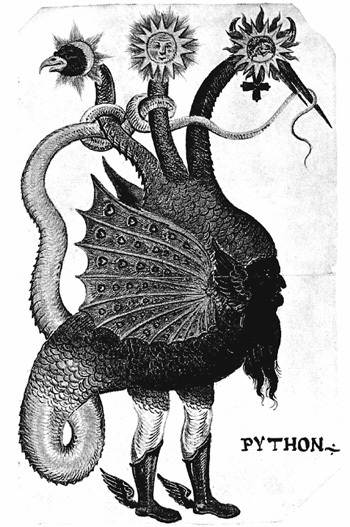 The spiritus mercurialis and his transformations represented as a monstrous dragon. It is a quaternity, in which the fourth is at the same time the unity of the three, the unity being symbolized by the mystagogue Hermes. The three (above) are (left to right): Luna, Sol. and coniunctio Solis et Lunae in Taurus, the House of Venus.
The spiritus mercurialis and his transformations represented as a monstrous dragon. It is a quaternity, in which the fourth is at the same time the unity of the three, the unity being symbolized by the mystagogue Hermes. The three (above) are (left to right): Luna, Sol. and coniunctio Solis et Lunae in Taurus, the House of Venus.
Together they form  = Mercurius. Illuminated drawing in a German alchemical ms., c. 1600
= Mercurius. Illuminated drawing in a German alchemical ms., c. 1600
ALCHEMICAL
STUDIES
C. G. JUNG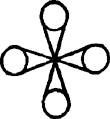 TRANSLATED BY R. C. C.
TRANSLATED BY R. C. C.
HULL
54 ILLUSTRATIONSB O L L I N G E N S E R I E S X X
 COPYRIGHT 1967 BY BOLLINGEN FOUNDATION, NEW YORK, N.Y.
COPYRIGHT 1967 BY BOLLINGEN FOUNDATION, NEW YORK, N.Y.
PUBLISHED BY PRINCETON UNIVERSITY PRESS, PRINCETON, N.J.
ALL RIGHTS RESERVED Second printing, 1970 THIS EDITION IS BEING PUBLISHED IN THE UNITED STATES OF AMERICA BY PRINCETON UNIVERSITY PRESS AND IN ENGLAND BY ROUTLEDGE & KEGAN PAUL, LTD. IN THE AMERICAN EDITION, ALL THE VOLUMES COMPRISING THE COLLECTED WORKS CONSTITUTE NUMBER XX IN BOLLINGEN SERIES. THE PRESENT VOLUME IS NUMBER 13 OF THE COLLECTED WORKS AND WAS THE FIFTEENTH TO APPEAR. LIBRARY OF CONGRESS CATALOGUE CARD NUMBER: 75-156 ISBN 0-691-09760-7 MANUFACTURED IN THE U.S.A.
EDITORIAL NOTE
When we compare the essays in the present volume with Jungs monumental
Mysterium Coniunctionis, with
Psychology and Alchemy and to a lesser extent
Aion, we realize their special value as an introduction to his researches into alchemy. The three longer works, published earlier in this edition, have an impact which to the uninitiated is well-nigh overwhelming.
After them these shorter and more manageable works will be turned to, if not for relaxationtheir erudition forbids thatat least with a feeling of lively interest, as preliminary studies for the weightier volumes which they now appear to summarize. Much of the symbolic matter has been referred to in other earlier publications: the visions of Zosimos in Transformation Symbolism in the Mass, and Mercurius in all the above-mentioned works but more especially in The Psychology of the Transference, while The Philosophical Tree develops the theme of the tree symbol discussed sporadically in Symbols of Transformation. The Commentary on The Secret of the Golden Flower is of considerable historical interest. Jung says in Memories, Dreams, Reflections (ch. 7): Light on the nature of alchemy began to come to me only after I had read the text of the Golden Flower, that specimen of Chinese alchemy which Richard Wilhelm sent me in 1928. I was stirred by the desire to become more closely acquainted with the alchemical texts. Paracelsus as a Spiritual Phenomenon stands out as a separate study with a powerful appeal, perhaps because Jung could identify himself rather closely and sympathetically with that dynamic and explosive personage, his own countryman.
Because of its emphasis on alchemical sources, it is included in the present volume rather than in Volume 15 with two shorter essays on Paracelsus as a personality and physician. * The Editors and the translator are greatly indebted to the late Mr. A. S. B. Glover for the translation of the Latin, Greek, and French passages in the text, as well as for his tireless work in checking the references and bibliographical data, which continued until shortly before his death in January 1966.
For assistance in explicating Nol Pierres poem, grateful acknowledgment is made to Comte Pierre Crapon de Caprona (Nol Pierre), to Miss Paula Deitz, and to Mr. Jackson Mathews. For help and co-operation in obtaining the photographs for the plates in this volume the Editors are much indebted to the late Mrs. Marianne Niehus-Jung, who made materials available from Professor Jungs collection; to Dr. Jolande Jacobi and Dr. G. G.
Jung Institute, Zurich; and to Mr. Hellmut Wieser, of Rascher Verlag, Zurich. The frontispiece, an almost exact coloured replica of a woodcut published by the author in Paracelsica, was discovered fortuitously in a manuscript in the Mellon Collection of the Alchemical and Occult. It is reproduced by courtesy of Mr. Paul Mellon and the Yale University Library. The Editors are indebted also to Mr.
Laurence Witten for his advice and assistance in regard to it.
TABLE OF CONTENTS
Translated from the Europischer Kommentar to
Das Geheimnis der goldenen Blte: Ein chinesisches Lebensbuch, 5th edn. (Zurich: Rascher, 1957). Translated from Die Visionen des Zosimos,
Von den Wurzeln des Bewusstseins (Zurich: Rascher, 1954). Translated from Paracelsus als geistige Erscheinung,
Paracelsica: Zwei Vorlesungen ber den Arzt und Philosophen Theophrastus (Zurich: Rascher, 1942). Translated from Der Geist Mercurius,
Symbolik des Geistes (Zurich: Rascher, 1948).
Translated from Der philosophische Baum, Von den Wurzeln des Bewusstseins (Zurich: Rascher, 1954).
LIST OF ILLUSTRATIONS
For Commentary on
The Secret of the Golden Flower Drawings from the
Hui Ming Ching, as reproduced in the original Swiss edition of
Das Geheimnis der goldenen Blte (1929). Drawings or paintings by patients in analysis. Authors collection, except A4: C. G. Jung Institute.
For Paracelsus as a Spiritual Phenomenon Illuminated drawing from a German alchemical ms., c. 1600, in the collection of Paul Mellon (now in the Yale University Library). It replaces an almost identical woodcut from Nazari, Della tramutatione metallica sogni tre (Brescia, 1599), reproduced in Paracelsica. P : Yale Univ. Library. Add. 15268 (13th cent.), fol. 242 v . 242 v .
P : British Museum. Woodcut from Rosarium philosophorum (second part of De alchimia, 1550), fol. X, iii v (copy in authors collection). Painting from Das Buch der hl. Dreifaltigkeit... und Beschreibung der Heimlichkeit von Vernderung der Metallen (1420), in the Codex Germanicus 598, Staatsbibliothek, Munich.
P : Staatsbibliothek. Woodcut in Reusner, Pandora (1588), p. 249 (copy in authors collection). Drawing from a variant of the Ripley Scrowle (1588), British Museum MS. Sloane 5025. P : British Museum.
Engraving from Lambspringk, De lapide philosophico, fig. XII, in Musaeum hermeticum (1678), p. 365. P : C. G. Jung Institute.
Page from Rhenanus, Solis e puteo (1613), as reproduced in Paracelsica. For The Philosophical Tree Authors collection, except (a design in embroidery): C. G. Jung Institute.
Next page

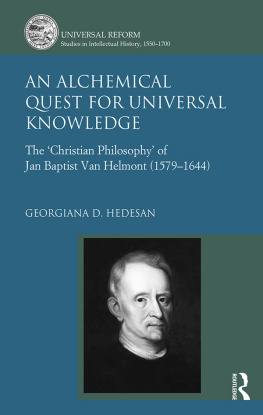
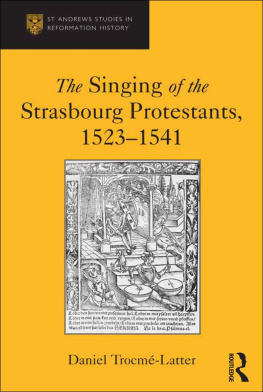
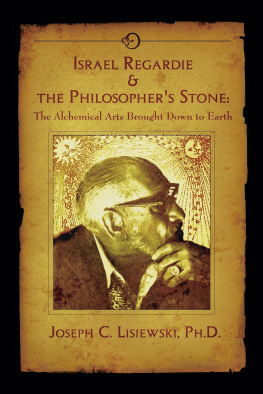
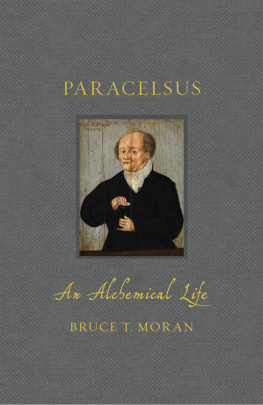

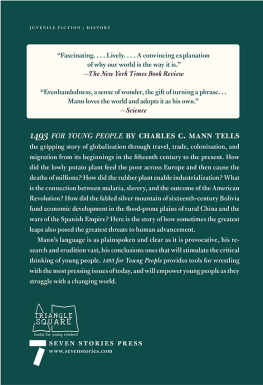
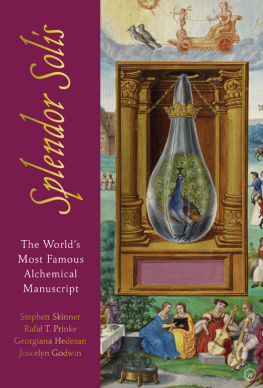
 THE COLLECTED WORKSOF C. G. JUNG VOLUME 13EDITORSSIR HERBERT READMICHAEL FORDHAM, M.D., M.R.C.P.GERHARD ADLER, PH.D.WILLIAM MCGUIRE,executive editor
THE COLLECTED WORKSOF C. G. JUNG VOLUME 13EDITORSSIR HERBERT READMICHAEL FORDHAM, M.D., M.R.C.P.GERHARD ADLER, PH.D.WILLIAM MCGUIRE,executive editor The spiritus mercurialis and his transformations represented as a monstrous dragon. It is a quaternity, in which the fourth is at the same time the unity of the three, the unity being symbolized by the mystagogue Hermes. The three (above) are (left to right): Luna, Sol. and coniunctio Solis et Lunae in Taurus, the House of Venus.
The spiritus mercurialis and his transformations represented as a monstrous dragon. It is a quaternity, in which the fourth is at the same time the unity of the three, the unity being symbolized by the mystagogue Hermes. The three (above) are (left to right): Luna, Sol. and coniunctio Solis et Lunae in Taurus, the House of Venus. = Mercurius. Illuminated drawing in a German alchemical ms., c. 1600
= Mercurius. Illuminated drawing in a German alchemical ms., c. 1600 TRANSLATED BY R. C. C.
TRANSLATED BY R. C. C. COPYRIGHT 1967 BY BOLLINGEN FOUNDATION, NEW YORK, N.Y.
COPYRIGHT 1967 BY BOLLINGEN FOUNDATION, NEW YORK, N.Y.